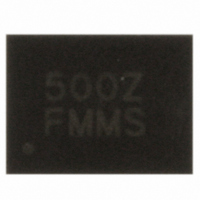ISL8500IRZ Intersil, ISL8500IRZ Datasheet - Page 11

ISL8500IRZ
Manufacturer Part Number
ISL8500IRZ
Description
IC PWM REG 2A BUCK 12-DFN
Manufacturer
Intersil
Type
Step-Down (Buck), PWM - Voltage Moder
Datasheet
1.ISL8500IRZ.pdf
(15 pages)
Specifications of ISL8500IRZ
Internal Switch(s)
Yes
Synchronous Rectifier
No
Number Of Outputs
1
Voltage - Output
0.6 ~ 19 V
Current - Output
2A
Frequency - Switching
500kHz
Voltage - Input
4.5 ~ 25 V
Operating Temperature
-40°C ~ 85°C
Mounting Type
*
Package / Case
12-DFN
Voltage - Supply
4.5 V ~ 25 V
Frequency-max
550kHz
Duty Cycle
94%
Pwm Type
Voltage Mode
Buck
Yes
Boost
No
Flyback
No
Inverting
No
Doubler
No
Divider
No
Cuk
No
Isolated
No
Rohs Compliant
YES
Lead Free Status / RoHS Status
Lead free / RoHS Compliant
Available stocks
Company
Part Number
Manufacturer
Quantity
Price
Company:
Part Number:
ISL8500IRZ
Manufacturer:
Intersil
Quantity:
100
Part Number:
ISL8500IRZ-T
Manufacturer:
RENESAS/瑞萨
Quantity:
20 000
Output Voltage Selection
The regulator output voltages can be programmed using
external resistor dividers that scale the voltage feedback
relative to the internal reference voltage. The scaled voltage
is fed back to the inverting input of the error amplifier; refer to
Figure 20.
The output voltage programming resistor, R
the value chosen for the feedback resistor, R
output voltage, V
value for the feedback resistor is typically between 1kΩ and
10kΩ.
If the output voltage desired is 0.6V, then R
unpopulated.
The buck output can be programmed as high as 19V. Proper
heatsinking must be provided to insure that the junction
temperature does not exceed +125°C.
When the output is set greater than 2.7V, it is recommended to
pre-load at least 10mA and make sure that the input rise time is
>> faster than the VOUT1 rise time. This allows the BOOT
capacitor adequate time to charge for proper operation.
Protection Features
The ISL8500 limits current in the power devices to limit on-chip
power dissipation. Overcurrent limits on the regulator protect
the internal power device from excessive thermal damage.
Undervoltage protection circuitry on the buck regulator provides
a second layer of protection for the internal power device under
high current condition.
Buck Regulator Overcurrent Protection
During the PWM on-time, the current through the internal
switching MOSFET is sampled and scaled through an
internal pilot device. The sampled current is compared to a
nominal 3.5A overcurrent limit. If the sampled current
exceeds the overcurrent limit reference level, an internal
overcurrent fault counter is set to 1 and an internal flag is
set. The internal power MOSFET is immediately turned off
and will not be turned on again until the next switching cycle.
The protection circuitry continues to monitor the current and
turns off the internal MOSFET as described. If the
overcurrent condition persists for eight sequential clock
R
4
=
----------------------------------
V
R
OUT
1
FIGURE 20. EXTERNAL RESISTOR DIVIDER
×
0.6V
–
0.6V
OUT
EA
, of the regulator; see Equation 2. The
REFERENCE
-
+
0.6V
11
R1
R4
4
, will depend on
1
P
, and the desired
is left
V
OUT
(EQ. 2)
ISL8500
cycles, the overcurrent fault counter overflows, indicating an
overcurrent fault condition exists. The regulator is shut down
and power good goes low. If the overcurrent condition clears
prior to the counter reaching four consecutive cycles, the
internal flag and counter are reset.
The protection circuitry attempts to recover from the
overcurrent condition after waiting 4 soft-start cycles. The
internal overcurrent flag and counter are reset. A normal
soft-start cycle is attempted and normal operation continues
if the fault condition has cleared. If the overcurrent fault
counter overflows during soft-start, the converter shuts down
and this hiccup mode operation repeats.
There is 100ns blanking time for noise immunity. It is
recommended to operate the duty cycle higher than the
blanking time to insure proper overcurrent protection.
Undervoltage Protection
If the voltage detected on the buck regulator FB pin falls 25%
below the internal reference voltage, the undervoltage fault
condition flag is set. The regulator is shutdown. The
controller enters a recovery mode similar to the overcurrent
hiccup mode. No action is taken for 4 soft-start cycles and
the internal undervoltage counter and fault condition flag are
reset. A normal soft-start cycle is attempted and normal
operation continues if the fault condition has cleared. If the
undervoltage counter overflows during soft-start, the
converter is shut down and this hiccup mode operation
repeats.
Thermal Overload Protection
Thermal overload protection limits total power dissipation in
the ISL8500. There is a sensor on the chip to monitor the
junction temperature of the internal LDO and PWM switching
power N-Channel MOSFET. When the junction temperature
(T
sends a signal to the fault monitor.
The fault monitor commands the buck regulator to shut down.
The buck regulator soft-starts turn on again after the IC’s
junction temperature cools by +20°C. The buck regulator
experiences hiccup mode operation during continuous thermal
overload conditions. For continuous operation, do not exceed
the +125°C junction temperature rating.
Application Guidelines
Operating Frequency
The ISL8500 operates at a fixed switching frequency of
500kHz.
Buck Regulator Output Capacitor Selection
An output capacitor is required to filter the inductor current
and supply the load transient current. The filtering
requirements are a function of the switching frequency and
the ripple current. The load transient requirements are a
function of the slew rate (di/dt) and the magnitude of the
J
) of the sensor exceeds +150°C, the thermal sensor
December 10, 2007
FN6611.0







